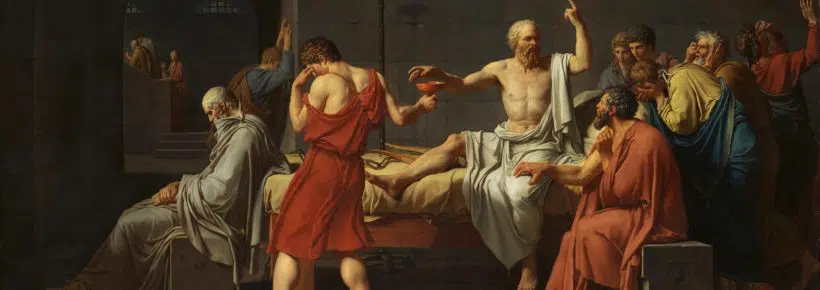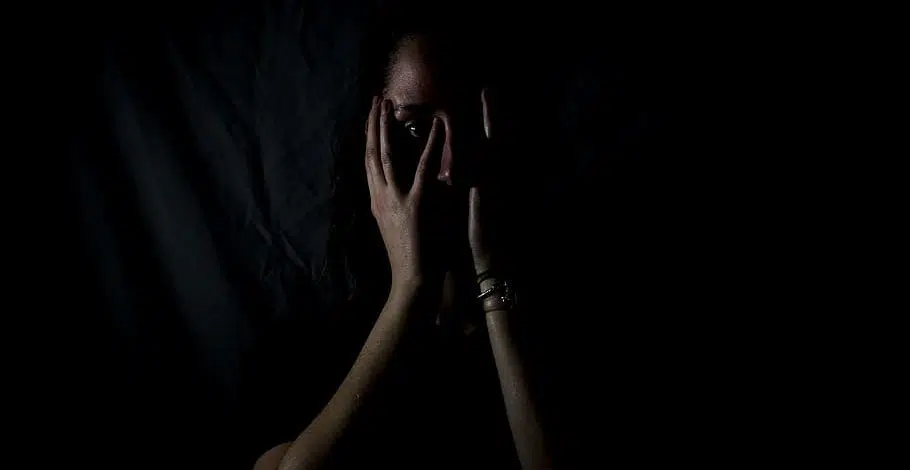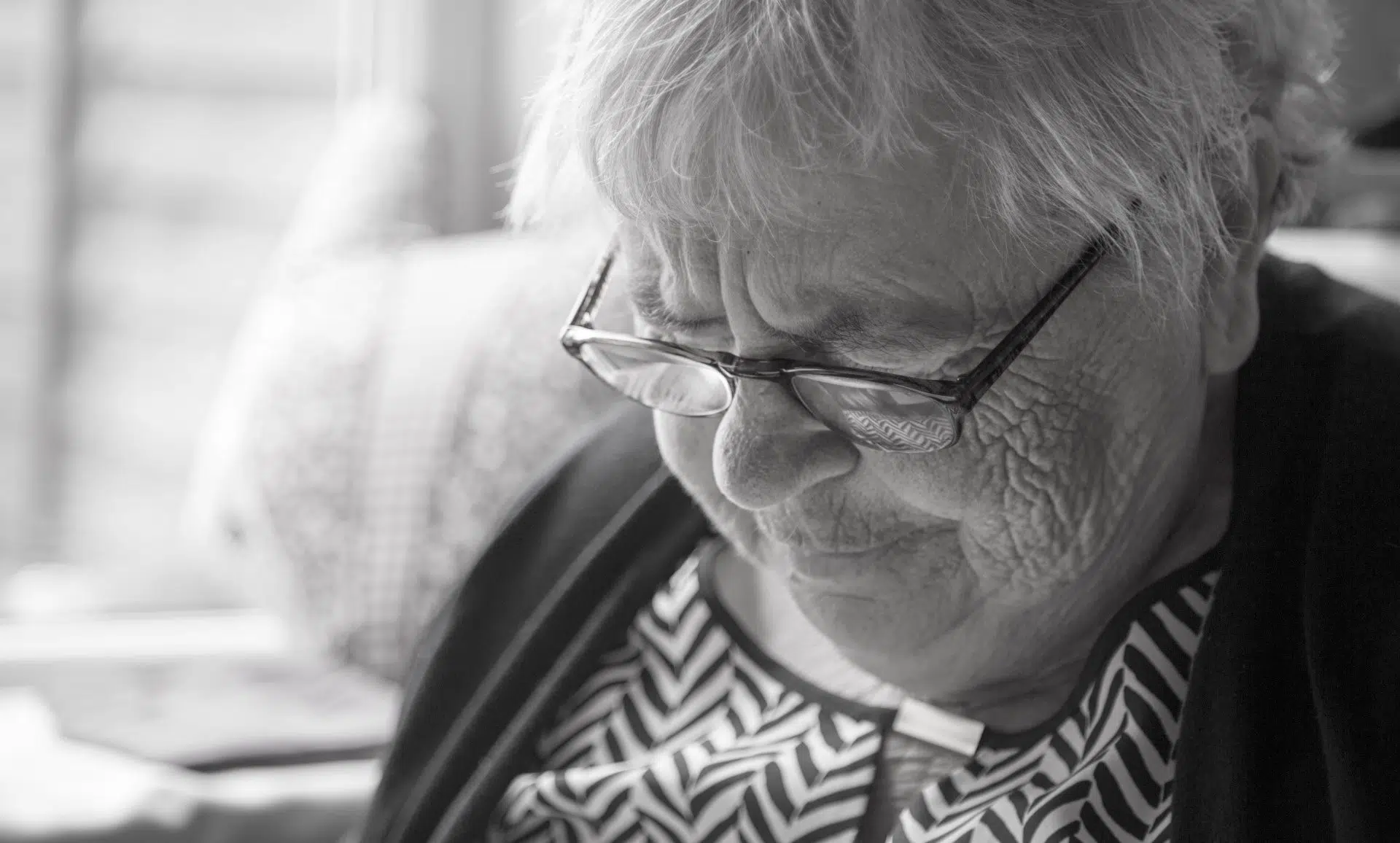A judicial determination should be made when it is necessary to hasten the death of an individual, whether it be a demented parent, a suffering, severely disabled spouse or a child.
~ Former Hemlock Society Executive Director Faye Girsh.1
British journalist Derek Humphry had a bit of a problem on his hands in early 1975. His wife Jean was suffering from incurable bone cancer, and he could not bear to see her in such pain. So, after much discussion between them, he handed her a cup of coffee loaded with barbiturates and pain killers. She drank this concoction and died within minutes.
Less than a year after Jean died, Humphry married Ann Wickett. With her help, he wrote the book Jean’s Way, describing the ordeal he had shared with his first wife. The media was actively seeking ways to promote euthanasia, so the book was soon made into a pro-euthanasia television movie and a stage play entitled Is this the Day?, the last words Jean Humphry allegedly spoke before she killed herself.
In 1980, Humphry moved to Los Angeles, where he founded the Hemlock Society, aptly named after the cup of poisonous herbs that the Greek philosopher Socrates was forced to drink by his Athenian enemies (perhaps it is significant that Socrates was the victim of involuntary assisted suicide). Humphry also founded a pro‑euthanasia political group named Americans against Human Suffering (AAHS) to promote the legalization and social acceptance of assisted suicide.

The Death of Socrates, by Jacques-Louis David
What was Humphry’s goal? Like all leading euthanasists, he despised true religion, boasting, “We are trying to overturn 2,000 years of Christian tradition.”2
The Deaths of Ann’s Parents
In 1986, Ann Wickett Humphry’s parents took their own lives, assisted by her and Derek Humphry. The Humphrys impersonated doctors in order to obtain lethal doses of Vesparex, a powerful barbiturate. They then mixed the crushed tablets into applesauce and ice cream. Ann spoon-fed her mother the deadly ice cream, and Derek watched her father feed himself the applesauce. Both of Ann’s parents died minutes later.3 Technically, Derek Humphry assisted in a suicide while his wife actually committed a homicide.
The Humphrys knew that they had committed serious felonies, so they covered up the evidence of their crimes. Ann put the dishes in the dishwasher and buried her handbag, containing the unused Vesparex, in the garbage. The Humphrys also destroyed any other evidence of their participation in the deaths, including all correspondence between themselves and Ann’s parents regarding assisted suicide. To top it all off, Ann told the coroner that her sister was their parent’s primary caregiver, thereby attempting to implicate her in the deaths!3
Following her husband’s lead, Ann Humphry soon authored a book about her parent’s death entitled Double Exit (perhaps the title was in deference to Britain’s Exit Society, another “right‑to‑die” group).
Ann’s Turn to Die
Unfortunately for Ann, what goes around always comes around….
Ann Wickett Humphry was diagnosed with breast cancer in September 1989. Derek Humphry, the leader of the “compassionate” Hemlock Society, responded to this situation by labeling her a mental incompetent and then dumping her.
Robert W. Stone, Ann’s son, defended her and revealed some of the inner machinations of the Hemlock Society when he wrote:
Having to respond to Derek Humphry’s claims of my mother’s “mental illness” is both humiliating and insulting. Anyone who knew Ann Wickett realizes how courageous and sensible she was, and how preposterous such claims are. And no one better than Humphry himself. Death for Humphry’s Hemlock Society is strictly business, and to him his wife simply became bad business, to be discarded. What he did to my mother disgusts me. To top it off, he had no qualms about printing a eulogy in The New York Times, then later openly admitting its purpose was damage control.4
Ann then publicly charged Derek with gross hypocrisy. Where was the caring, nurturing attitude so prevalent in Hemlock Society literature? Ann said, “I am an embarrassment to them. I was dumb enough to get cancer.”3 She wrote a short suicide letter to her husband before killing herself:
Dear Derek:
There. You got what you wanted. Ever since I was diagnosed as having cancer, you have done everything conceivable to precipitate my death.
I was not alone in recognizing what you were doing. What you did — desertion and abandonment and subsequent harassment of a dying woman — is so unspeakable there are no words to describe the horror of it.
Yet you know. And others know too. You will have to live with this until you die.
May you never, ever forget.
Ann added a hand‑written note to this suicide letter and sent it to her friend, anti‑euthanasia campaigner Rita Marker. This note said, “My final words to Derek. He is a killer. I know. Jean [his first wife] actually died of suffocation. I could never say it until now; who would believe me? Do the best you can.”5
After writing down her despairing thoughts, Ann Humphry rode her horse into a remote Oregon wilderness and killed herself.

Hemlock flower
The Hemlock Society and Assisted Suicide
Ann Humphry charged that the Hemlock Society had become a “parasitic organism,” taking dues from tens of thousands of members and returning very little (Derek Humphry’s salary was at least $65,000 in 1985 ― $145,000 in today’s dollars ― not counting travel expenses and many other perquisites). Additionally, Humphry retained full control of Hemlock Society finances, and authorized illegal transfers of Hemlock money to non-tax exempt satellite organizations such as Americans against Human Suffering, which he also founded.3
Although it does not flatly say so in public, the Hemlock Society has as its ultimate objective the enshrining of euthanasia on demand in the United States in the same manner that abortion on demand is now so honored. Speakers at Hemlock Society conferences and meetings frequently urge members to work towards this goal.
As Derek Humphry has made perfectly clear, the Society intends to use the virtually infallible strategy of gradualism [1] to achieve its ultimate goal. The leader of another pro-euthanasia group, Concern for Dying, describes how gradualism works:
You are right when you say that our people believe rational suicide to be acceptable ― our position is that individuals make their own decisions and that those decisions should be honored by others. We also know from experience that if we try to foist our ideas too strongly and too soon on a society not yet ready to consider them, we will damage if not destroy our effectiveness. By moving cautiously and without stridency, we gain a larger audience for our views.6
First the euthanasiasts pushed for the Living Will, and then the durable power of attorney. Then it was doctor‑assisted suicide [2], and finally it will be euthanasia on demand.
In support of its goals, the Hemlock Society and its members actively counsel people to take their own lives. Their purpose in doing so is not only to relieve the suffering of individuals; they correctly assume that widespread flouting of the law is a powerful propaganda tool. After all, if a law is widely ignored, why retain it? It’s outmoded and antiquated, after all, and society has matured beyond such meaningless restraints.
Does all of this sound familiar?
If it doesn’t, it certainly should!

The Hemlock Society published a book entitled Compassionate Crimes, Broken Taboos, which is a detailed anthology of mercy killings and assisted suicides.3 Members of the Society joked that libraries have a real problem in getting people to return this book (after all, dead people don’t worry much about nickel-a-day fines).
Disturbingly, the Hemlock Society experienced a large influx of new members in the late 1980s and early 1990s, including many AIDS sufferers. If American society continues to follow the utilitarian Hemlock lead, we may soon find a cheap, easy, and efficient way to avoid the expense of caring for all of those stigmatized “AIDS sufferers.”
Even more unsettling is the fact that the “Right to Die” movement is spreading all over the world. Derek Humphry is a past President of the World Federation of Right to Die Societies, which currently claims a million members in 23 countries.
How the Hemlock Society Gave Us Legal Euthanasia
The Hemlock Society (now Compassion & Care since it merged with Compassion in Dying) sought to legalize and normalize physician-assisted suicide. One of the biggest actors in this movement was Dr. Jack Kevorkian. He successfully brought this topic into the public eye.
Jack Kevorkian, Dr. Death
According to InsideEdition [3], Dr. Jack Kevorkian [4], otherwise known as “Dr. Death, [5]” had a longtime interest in the dying, not the living. He was also a member of the Hemlock Society.
According to a report by the Hemlock Society of San Diego [6], the event that garnered nationwide attention to the Hemlock Society was the 1990 assisted suicide of fellow Hemlock member Janet Adkins. Janet had specifically sought out Kevorkian for this. He assisted her in her suicide using his deceptively named “Mercitron” machine, a machine that dispensed carbon monoxide to a patient.
Between 1990 and 1997, Kevorkian assisted in the suicides of 130 patients (his own admission). A 1997 report [7] revealed that at least 60% of Kevorkian’s patients that he killed were not terminally ill, and 13 had not even complained of pain.
In 1997, his spree had come to an end. Kevorkian killed patient Tom Youk [6], who had ALS, through a lethal injection. To make this crime worse, he videotaped it, as though killing a patient is a casual and ironic thing. The public was horrified. Kevorkian suggested he must be charged with murder, and that the case must be decided by the Supreme Court. A move that was likely an attempt to garner attention and sympathy for his cause.

While Kevorkian had evaded the law for 7 years while he helped end the lives of 130 patients, Tom Youk’s case was different [5]. Allegedly, Kevorkian had only given the other patients the means (and ease) of killing themselves, which was the technicality that kept him from being prosecuted. In Youk’s case, Kevorkian had used a lethal injection to kill the patient himself, thereby committing homicide.
In the end, he was sentenced to 10-25 years in prison for second degree murder. He ended up serving only eight, being released at age 79. He later died in 2011 at the age of 83. His legacy lives on, and his life serves as one that made assisted suicide a more acceptable practice in Americans’ minds.
As Derek Humpry put it [8]:
The Hemlock Society was founded 10 years before Kevorkian came on the scene. And he did a great job in publicizing the right to choose to die. … [But] our tactics were different. I wanted to change the law, to permit physician-assisted suicide for the terminally ill. He wanted to shock the medical profession by his antics and his show-offs on television and his costumes and all the rest of it. But that’s not how things work. Doctors will not step outside the law if they can possibly help it.
Doubtless, the Hemlock Society’s efforts – strengthened by “Dr. Death” – contributed to the legalization and acceptance of physician-assisted suicide in 10 states and DC. [9]
Today’s Hemlock Society
After Humphry left the Hemlock Society, its leadership renamed the organization End-of-Life Choices in 2003. Shortly thereafter, End-of-Life Choices merged with Compassion in Dying and became known as Compassion & Choices. Soon after, Compassion & Choices of New York State renamed itself End of Life Choices New York.
Compassion & Choices (C&C) — the former Hemlock Society — is a $25 million a year organization currently comprised of (1) the C&C national headquarters, located in Denver, Colorado; (2) the C&C Action Network, its legislative advocacy arm; and (3) state chapters in California, Colorado, Illinois, Minnesota and Washington State.
Compassion and Choices states that its mission [10] is to “improve care” and “expand end-of-life options.” Unsurprisingly, its website has very little information on the first element of this mission and is dedicated almost entirely to pushing physician-assisted suicide.
Final Thoughts
The Hemlock Society may now have a name that implies that it is much more caring and gentler, but at its core it is the same old lethal Hemlock Society. For them, death is simply a matter of economics and a tool to enhance the comfort and convenience of those who are still alive and healthy.
This article was most recently updated in April 2023.
+ Endnotes
[1] Hemlock Society Executive Director Faye Girsh, December 3, 1997 quote. “Ten Pro-Life Activists Charged.” LifeSite Daily News, January 26, 1998.
[2] Derek Humphry, quoted in the San Francisco Chronicle, August 28, 1992, page A25.
[3] Thomas W. Case. “A Requiem for the Hemlock Society.” Fidelity Magazine, June 1990, pages 24 to 32.
[4] Robert W. Stone, son of Ann Wickett Humphry, in a letter to Vanity Fair, March 1992.
[5] Excerpts from Anne Wickett Humphry’s suicide note, addressed to her husband Derek Humphry, founder of the Hemlock Society, before she killed herself in 1991. Quoted in “Final Exit.” Arlington Catholic Herald, November 4, 1993, page 4.
[6] Mrs. A‑J. Rock‑Levinson, Executive Director of Concern for Dying, in a 1978 letter replying to a pro‑lifer’s question. Quoted in Father Paul Marx’s And Now…Euthanasia. Gaithersburg, Maryland: Human Life International, 1985, page 23. Second revised edition.